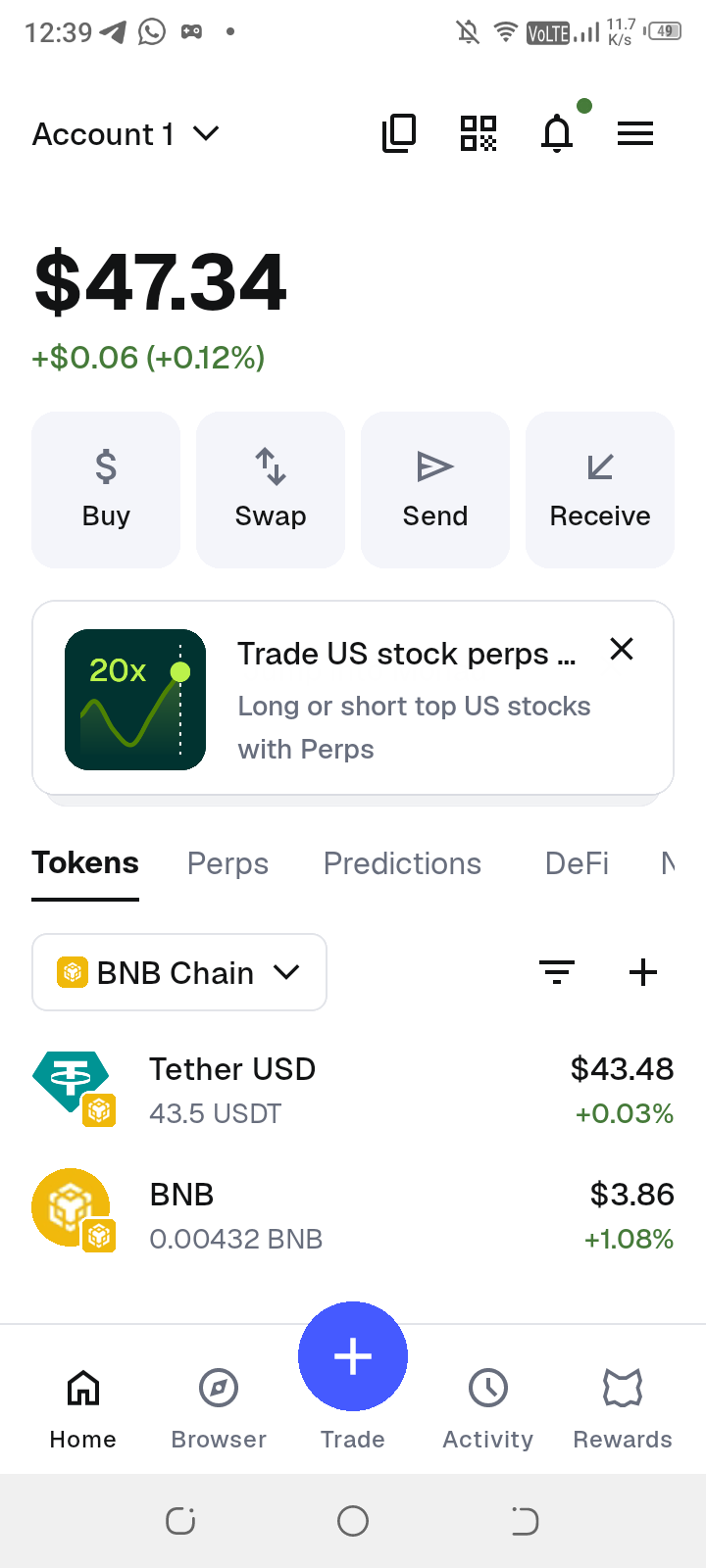Drones Will Be Used Against You After The Collapse, Here's How To Fight Back!.
-----------
When society collapses, whether through war, economic destruction, civil unrest, or some other large-scale disaster, most people imagine chaos in the streets, empty grocery stores, and people fighting over basic resources. But there’s another threat you need to be prepared for. One that flies silently overhead and could strike you before you even know you’re being watched. I’m talking about drones.
As someone who’s been researching prepping, reading articles, studying books, and creating survival content, I see a lot of talk about the same cookie-cutter topics. Water filtration, food storage, home invasions, and civil unrest. But I rarely see anyone talking about drones, or even asking me about them, and that’s a mistake. Drones are already a massive part of our world. They are used by hobbyists, by militaries, by law enforcement, and even by cartels. After a collapse, I truly believe drones will become a major concern, and not many people are thinking about it now, but they should be.
To see for myself how accessible this tech is, I even ordered a couple drones off of AliExpress. They were cheap, around thirty dollars each. And they worked. I also saw higher-end models being sold with full HD cameras, 50 times zoom, and flight times of twenty-two to thirty minutes, all for under two hundred dollars. You can get much better ones from companies like DJI. This kind of technology is available to anyone. After the collapse, criminals will absolutely use it the wrong way. Let’s break it down.
How Criminals Will Use Drones After the Collapse
If the power grid fails, the economy crashes, or civil war breaks out, drones will quickly become a critical tool for attackers. They are cheap, quiet, and extremely effective. And they will be used to scout, surveil, and attack.
The first and most obvious use will be reconnaissance. Criminals or roaming gangs will launch drones to fly over neighborhoods, countryside roads, and forested areas to look for signs of human activity. They will be scanning for solar panels on rooftops, vegetable gardens in your backyard, rainwater catchment barrels, smoke coming from chimneys, or even livestock.
If you’ve bugged out to a remote camp, don’t think you’re automatically safe. Drones can cover miles of wilderness and pick up trails, tracks, or even heat signatures from above. That camo tarp you set up may look hidden from the ground, but from the air, it might stand out like a billboard.
Some drones will have thermal imaging, which means they do not need daylight to find you. They can detect your body heat, the warmth of a running generator, or even a campfire. If you're cooking outside, they’ll see the heat plume. If you're walking in the dark, they’ll see your body glowing in infrared. Unless you actively work to hide that heat, you’re vulnerable. And they won’t just use these drones to watch. Some will use them to strike.
Drones Will Be Weaponized
In war zones like Ukraine, we’re already seeing what’s possible. Commercial drones are being modified to drop improvised explosives on enemy positions. You can find footage of drones dropping grenades through sunroofs or into trenches. The same thing can happen to you.
Post-collapse, criminals will use drones to drop pipe bombs, Molotov cocktails, smoke bombs, or homemade incendiaries onto homes, vehicles, or camps. A single road flare dropped into dry brush could start a wildfire. A smoke bomb tossed into your backyard could confuse you long enough for them to rush your property. Some may drop rocks or debris through skylights to distract you before a ground attack. This is asymmetric warfare adapted for the collapse.
If you’ve made enemies, or if you’re guarding something valuable, drones will be part of their toolkit. They will scout, test your defenses, and possibly attack from above.
Do Not Advertise What You Have
One of the biggest mistakes people make in a collapse is showing what they have. If you own something that desperate people might want, keep it covered or bring it inside when it's not in use. That includes your generator, solar panels, rain barrels, even buckets and gardening tools. A drone flying overhead for two minutes can take a dozen high-resolution photos of your property. They’ll know what you have, what time you’re active, and whether you’re worth robbing.
You don’t need to live in fear, but you do need to live smart. If you’ve got gear, hide it. If you’re growing food, put it behind fencing or netting that breaks up the visual pattern from above. If your generator is running, place it in a shed or behind a sandbag wall. Muffle the noise and block the heat. Noise attracts people. Heat attracts drones. You cannot afford to make yourself a target.
How to Defend Yourself from Drones
You are not helpless. You can fight back. Start by limiting your visibility and heat signature. If you’re moving during the day in open areas, you’re easy to spot. Travel at night. Stay close to trees and shaded terrain. Forest canopies interfere with a drone’s line of sight and break up your outline.
To protect yourself from thermal drones, use mylar emergency blankets. These shiny blankets reflect heat and can distort your infrared signature. Wrap your shelter. Line the inside of your tarp. Cover stored gear. They won’t make you invisible, but they may throw off the drone’s thermal sensor just enough to protect you.
Now let’s talk about how to bring them down.
Shotguns. In Ukraine, soldiers and mercenaries have confirmed that 12-gauge shotguns with birdshot are highly effective against drones. One operator said he uses a Mossberg 500 and has downed multiple drones with ease. Birdshot gives you a wide spread, so you don’t need perfect aim. Just the right timing and angle.
Slingshots. If you want a quieter option, a high-powered slingshot is a great tool. Loaded with steel balls, marbles, or rocks, it can take down drones silently and without giving away your location. Slingshots are legal in most places and don’t require ammo you can’t find or make. They are light, reusable, and surprisingly powerful.
Anti-drone guns. These are more advanced tools that jam a drone’s signal using radio frequencies, causing it to crash or return home. They are expensive, starting around four thousand dollars, but if you are defending a large property, a group, or critical resources, they may be worth it.
Sandbags. Don’t underestimate them. Stack sandbags around your rooftop, generator, garden, or fuel stores. They block line of sight and absorb damage from explosives. Even a small sandbag wall around your gear could be the reason a drone fails to hit its mark.
Fire is a Weapon. Prepare for It
If drones are dropping flares or incendiaries, fire is going to be one of your biggest threats. You must be ready.
Every household should have at least two to four fire extinguishers rated for Class A, B, and C fires. That means fires caused by solids, flammable liquids, and electrical sources. Keep one near your back door, one in the kitchen, one in your garage, and one near your generator or tools. If you live on a homestead or larger property, have extras near fuel, outbuildings, and sheds.
Fires can spread fast, and in a collapse, there’s no fire department coming to save you. Your only option is to put it out yourself or watch everything you’ve built burn.
Expect Injuries. Build a Trauma Kit
Drones dropping explosives or sharp objects will cause injuries. And if you’re hit, you need more than a box of bandages.
You need a trauma kit. A real one.
Here’s what every prepper household should have:
Tourniquets like CAT or SOFTT-W
Pressure dressings such as Israeli bandages
Compressed gauze for wound packing
Hemostatic agents like QuikClot or Celox
Chest seals for puncture wounds
Nitrile gloves
Trauma shears
A nasopharyngeal airway with lube
Burn dressings or sterile burn sheets
Antiseptic wipes or iodine swabs
Eye shield and eyewash solution
SAM splint for fractures
Permanent marker to note tourniquet times
Emergency blanket
Basic trauma instructions in case someone else has to treat you
Train your group to use these tools. Don’t just own the kit. Know the kit. At the very least, if you don’t want to take an in person course, watch youtube videos from experts to see how you can use each item. Remember that when the collapse hits, you are your own medic.
My Final Warning
Drones are not just military tech. After the collapse, they will be used by gangs, looters, and anyone with bad intentions and access to basic tech. They do not need the power grid. They can be charged using solar panels, car batteries, or scavenged power stations. They’re quiet, fast, and deadly.
They will be used to scout your property, track your movements, cause chaos, start fires, and even kill. And they will be used by people in your own community, not just by organized forces or governments.
Hide your gear. Conceal your heat. Fortify your home. Train your eyes to the sky. Be ready to defend not just against what’s coming through the door, but what’s flying over it.
Keep prepping!
Drones Will Be Used Against You After The Collapse, Here's How To Fight Back!.
-----------
When society collapses, whether through war, economic destruction, civil unrest, or some other large-scale disaster, most people imagine chaos in the streets, empty grocery stores, and people fighting over basic resources. But there’s another threat you need to be prepared for. One that flies silently overhead and could strike you before you even know you’re being watched. I’m talking about drones.
As someone who’s been researching prepping, reading articles, studying books, and creating survival content, I see a lot of talk about the same cookie-cutter topics. Water filtration, food storage, home invasions, and civil unrest. But I rarely see anyone talking about drones, or even asking me about them, and that’s a mistake. Drones are already a massive part of our world. They are used by hobbyists, by militaries, by law enforcement, and even by cartels. After a collapse, I truly believe drones will become a major concern, and not many people are thinking about it now, but they should be.
To see for myself how accessible this tech is, I even ordered a couple drones off of AliExpress. They were cheap, around thirty dollars each. And they worked. I also saw higher-end models being sold with full HD cameras, 50 times zoom, and flight times of twenty-two to thirty minutes, all for under two hundred dollars. You can get much better ones from companies like DJI. This kind of technology is available to anyone. After the collapse, criminals will absolutely use it the wrong way. Let’s break it down.
How Criminals Will Use Drones After the Collapse
If the power grid fails, the economy crashes, or civil war breaks out, drones will quickly become a critical tool for attackers. They are cheap, quiet, and extremely effective. And they will be used to scout, surveil, and attack.
The first and most obvious use will be reconnaissance. Criminals or roaming gangs will launch drones to fly over neighborhoods, countryside roads, and forested areas to look for signs of human activity. They will be scanning for solar panels on rooftops, vegetable gardens in your backyard, rainwater catchment barrels, smoke coming from chimneys, or even livestock.
If you’ve bugged out to a remote camp, don’t think you’re automatically safe. Drones can cover miles of wilderness and pick up trails, tracks, or even heat signatures from above. That camo tarp you set up may look hidden from the ground, but from the air, it might stand out like a billboard.
Some drones will have thermal imaging, which means they do not need daylight to find you. They can detect your body heat, the warmth of a running generator, or even a campfire. If you're cooking outside, they’ll see the heat plume. If you're walking in the dark, they’ll see your body glowing in infrared. Unless you actively work to hide that heat, you’re vulnerable. And they won’t just use these drones to watch. Some will use them to strike.
Drones Will Be Weaponized
In war zones like Ukraine, we’re already seeing what’s possible. Commercial drones are being modified to drop improvised explosives on enemy positions. You can find footage of drones dropping grenades through sunroofs or into trenches. The same thing can happen to you.
Post-collapse, criminals will use drones to drop pipe bombs, Molotov cocktails, smoke bombs, or homemade incendiaries onto homes, vehicles, or camps. A single road flare dropped into dry brush could start a wildfire. A smoke bomb tossed into your backyard could confuse you long enough for them to rush your property. Some may drop rocks or debris through skylights to distract you before a ground attack. This is asymmetric warfare adapted for the collapse.
If you’ve made enemies, or if you’re guarding something valuable, drones will be part of their toolkit. They will scout, test your defenses, and possibly attack from above.
Do Not Advertise What You Have
One of the biggest mistakes people make in a collapse is showing what they have. If you own something that desperate people might want, keep it covered or bring it inside when it's not in use. That includes your generator, solar panels, rain barrels, even buckets and gardening tools. A drone flying overhead for two minutes can take a dozen high-resolution photos of your property. They’ll know what you have, what time you’re active, and whether you’re worth robbing.
You don’t need to live in fear, but you do need to live smart. If you’ve got gear, hide it. If you’re growing food, put it behind fencing or netting that breaks up the visual pattern from above. If your generator is running, place it in a shed or behind a sandbag wall. Muffle the noise and block the heat. Noise attracts people. Heat attracts drones. You cannot afford to make yourself a target.
How to Defend Yourself from Drones
You are not helpless. You can fight back. Start by limiting your visibility and heat signature. If you’re moving during the day in open areas, you’re easy to spot. Travel at night. Stay close to trees and shaded terrain. Forest canopies interfere with a drone’s line of sight and break up your outline.
To protect yourself from thermal drones, use mylar emergency blankets. These shiny blankets reflect heat and can distort your infrared signature. Wrap your shelter. Line the inside of your tarp. Cover stored gear. They won’t make you invisible, but they may throw off the drone’s thermal sensor just enough to protect you.
Now let’s talk about how to bring them down.
Shotguns. In Ukraine, soldiers and mercenaries have confirmed that 12-gauge shotguns with birdshot are highly effective against drones. One operator said he uses a Mossberg 500 and has downed multiple drones with ease. Birdshot gives you a wide spread, so you don’t need perfect aim. Just the right timing and angle.
Slingshots. If you want a quieter option, a high-powered slingshot is a great tool. Loaded with steel balls, marbles, or rocks, it can take down drones silently and without giving away your location. Slingshots are legal in most places and don’t require ammo you can’t find or make. They are light, reusable, and surprisingly powerful.
Anti-drone guns. These are more advanced tools that jam a drone’s signal using radio frequencies, causing it to crash or return home. They are expensive, starting around four thousand dollars, but if you are defending a large property, a group, or critical resources, they may be worth it.
Sandbags. Don’t underestimate them. Stack sandbags around your rooftop, generator, garden, or fuel stores. They block line of sight and absorb damage from explosives. Even a small sandbag wall around your gear could be the reason a drone fails to hit its mark.
Fire is a Weapon. Prepare for It
If drones are dropping flares or incendiaries, fire is going to be one of your biggest threats. You must be ready.
Every household should have at least two to four fire extinguishers rated for Class A, B, and C fires. That means fires caused by solids, flammable liquids, and electrical sources. Keep one near your back door, one in the kitchen, one in your garage, and one near your generator or tools. If you live on a homestead or larger property, have extras near fuel, outbuildings, and sheds.
Fires can spread fast, and in a collapse, there’s no fire department coming to save you. Your only option is to put it out yourself or watch everything you’ve built burn.
Expect Injuries. Build a Trauma Kit
Drones dropping explosives or sharp objects will cause injuries. And if you’re hit, you need more than a box of bandages.
You need a trauma kit. A real one.
Here’s what every prepper household should have:
Tourniquets like CAT or SOFTT-W
Pressure dressings such as Israeli bandages
Compressed gauze for wound packing
Hemostatic agents like QuikClot or Celox
Chest seals for puncture wounds
Nitrile gloves
Trauma shears
A nasopharyngeal airway with lube
Burn dressings or sterile burn sheets
Antiseptic wipes or iodine swabs
Eye shield and eyewash solution
SAM splint for fractures
Permanent marker to note tourniquet times
Emergency blanket
Basic trauma instructions in case someone else has to treat you
Train your group to use these tools. Don’t just own the kit. Know the kit. At the very least, if you don’t want to take an in person course, watch youtube videos from experts to see how you can use each item. Remember that when the collapse hits, you are your own medic.
My Final Warning
Drones are not just military tech. After the collapse, they will be used by gangs, looters, and anyone with bad intentions and access to basic tech. They do not need the power grid. They can be charged using solar panels, car batteries, or scavenged power stations. They’re quiet, fast, and deadly.
They will be used to scout your property, track your movements, cause chaos, start fires, and even kill. And they will be used by people in your own community, not just by organized forces or governments.
Hide your gear. Conceal your heat. Fortify your home. Train your eyes to the sky. Be ready to defend not just against what’s coming through the door, but what’s flying over it.
Keep prepping!












